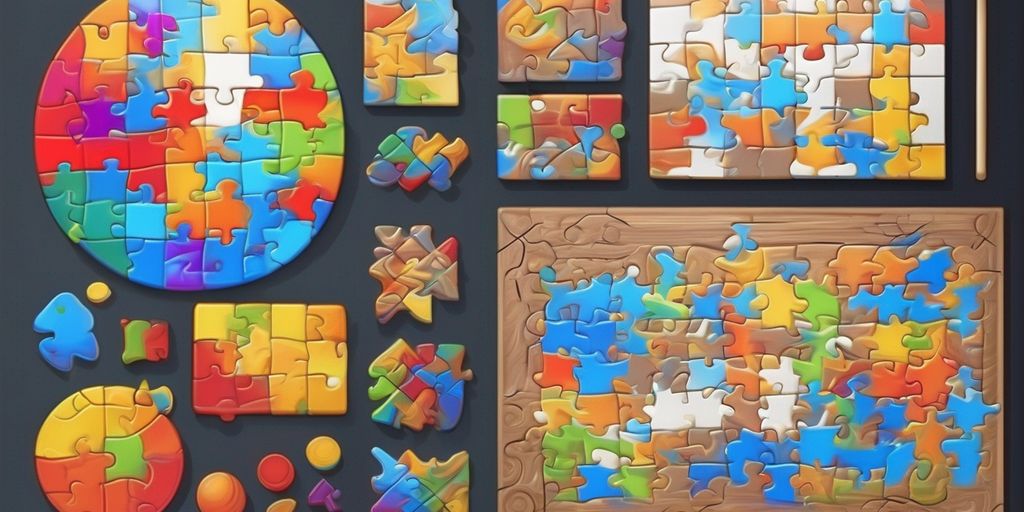The Common Law Admission Test (CLAT) is a crucial exam for students aspiring to enter prestigious law schools in India. Excelling in the reading comprehension section of CLAT can significantly enhance your overall score. This article delves into advanced strategies to master this section, helping you to understand the structure, develop key skills, and avoid common pitfalls.
Key Takeaways
- Understanding the structure of the CLAT reading comprehension section is essential for effective preparation.
- Developing critical reading and analytical thinking skills can greatly improve your performance.
- Time management is crucial to ensure you can answer all questions within the given timeframe.
- Practicing with different types of passages can help you become more adaptable and confident.
- Building a strong vocabulary can aid in better comprehension and inference of meanings.
Understanding the Structure of CLAT Reading Comprehension Sections
The CLAT Reading Comprehension section is a crucial part of the exam, designed to assess a candidate’s ability to understand and interpret written texts. This section typically includes a variety of passages followed by questions that test comprehension, inference, and critical analysis skills. Mastering this section is essential for achieving a high score on the CLAT exam.
Components of the Reading Comprehension Section
The Reading Comprehension section consists of multiple passages, each followed by a set of questions. These questions may ask about the main idea, supporting details, inferences, and the author’s tone or purpose. The passages can vary in length and complexity, requiring students to read carefully and think critically.
Types of Passages Included
The passages in the CLAT Reading Comprehension section can be of various types, including narrative, expository, and persuasive texts. Each type of passage requires a different approach to reading and understanding. For example, narrative passages often focus on storytelling and character development, while expository passages aim to inform or explain a topic. Persuasive passages, on the other hand, are designed to convince the reader of a particular viewpoint.
Scoring and Weightage
The Reading Comprehension section typically includes 22-26 questions, accounting for about 20% of the total exam score. Each correct answer earns one mark, while incorrect answers result in a deduction of 0.25 marks. This scoring system emphasizes the importance of accuracy and careful reading.
Regular practice and a structured approach are crucial for success in this evolving exam format. Engaging with a variety of texts and practicing different types of questions can help students build the skills needed to excel in the Reading Comprehension section.
For those looking to excel in the CLAT exam, resources like CLAT Possible offer comprehensive preparation materials and expert guidance to help students navigate the complexities of the Reading Comprehension section.
Key Skills Required for Excelling in CLAT Reading Comprehension
To excel in the CLAT Reading Comprehension section, students need to develop a set of essential skills. These skills not only help in understanding the passages but also in answering the questions accurately and efficiently. Here are the key skills required for success in this section.
Critical Reading Skills
Critical reading involves analyzing and evaluating the content of the passage. Students must be able to identify the main idea, understand the author’s tone, and recognize the structure of the passage. Developing critical reading skills is crucial for interpreting complex texts and answering inference-based questions.
Analytical Thinking
Analytical thinking is the ability to break down complex information into simpler parts. This skill helps in understanding the relationships between different ideas in the passage. Students should practice analyzing arguments, identifying assumptions, and evaluating evidence. Analytical thinking is essential for answering questions that require a deep understanding of the passage.
Time Management
Time management is a vital skill for any competitive exam, and CLAT is no exception. Students need to allocate their time wisely to ensure they can read the passages and answer all the questions within the given time frame. Practicing timed reading sessions and taking mock tests can help improve time management skills. Effective time management ensures that students can complete the section without feeling rushed.
Remember, mastering these skills takes time and practice. Regular reading and analysis of various types of passages can significantly enhance your comprehension abilities. For more advanced strategies and personalized guidance, consider enrolling in courses offered by CLAT Possible. Their expert instructors provide valuable insights and techniques to help you excel in the CLAT Reading Comprehension section.
Effective Strategies for Tackling Different Types of Passages
When preparing for the CLAT Reading Comprehension section, it’s crucial to adapt your approach based on the type of passage. Each passage type—narrative, expository, and persuasive—requires a unique strategy to maximize understanding and efficiency. Mastering these strategies can significantly boost your performance.
Common Pitfalls and How to Avoid Them
Navigating the CLAT Reading Comprehension section can be tricky, and many students fall into common traps. Recognizing these pitfalls and knowing how to avoid them can significantly boost your performance.
Misinterpreting Questions
One of the most frequent mistakes is misinterpreting the questions. This often happens when students rush through the passage or the questions. Take your time to understand what is being asked. Carefully read the question and refer back to the passage to ensure your answer is accurate. Practicing predictive reading, as suggested by CLAT Possible, can help you anticipate the types of questions that might be asked, making it easier to find the correct answers.
Overlooking Key Details
Another common issue is overlooking key details in the passage. These details can be crucial for answering questions correctly. To avoid this, make it a habit to underline or highlight important points as you read. This technique not only helps in retaining information but also makes it easier to locate specific details when answering questions.
Time Mismanagement
Time management is critical in the CLAT exam. Many students spend too much time on one passage or question, leaving insufficient time for others. To manage your time effectively, practice with timed mock tests. This will help you get a feel for the pace you need to maintain. Additionally, CLAT Possible offers extensive practice materials that can help you improve your speed and accuracy.
Consistent practice and a strategic approach are key to mastering the CLAT Reading Comprehension section. By understanding common pitfalls and learning how to avoid them, you can enhance your performance and boost your confidence.
The Role of Vocabulary in CLAT Reading Comprehension
A strong vocabulary is crucial for excelling in the CLAT Reading Comprehension section. It not only helps in understanding the passages but also in answering the questions accurately. Building a robust vocabulary involves regular reading and practice. Reading diverse materials such as newspapers, journals, and books can significantly enhance your word bank. Additionally, using flashcards and vocabulary apps can be beneficial.
Building a Strong Vocabulary
To build a strong vocabulary, one must engage in consistent reading and practice. Reading a variety of materials, including newspapers, journals, and books, can greatly expand your vocabulary. Utilizing tools like flashcards and vocabulary apps can also be very effective.
Contextual Understanding of Words
Understanding words in context is essential for CLAT Reading Comprehension. This means not just knowing the definition of a word, but also understanding how it is used in different contexts. Practice by reading complex texts and noting how words are used in various sentences.
Using Vocabulary to Infer Meaning
A good vocabulary allows you to infer the meaning of unfamiliar words from the context. This skill is particularly useful in the CLAT exam, where you may encounter challenging passages. Practice by reading and trying to deduce the meanings of unknown words from the surrounding text.
For those aiming to gain admission into NALSAR University of Hyderabad, enhancing your vocabulary is a strategic move. Extensive reading and regular practice of comprehension passages are highly recommended. Joining study groups and seeking mentorship from NALSAR alumni can provide better retention and strategic insights into exam preparation.
Incorporating these strategies into your study routine can significantly improve your performance in the CLAT Reading Comprehension section. Remember, a strong vocabulary is not built overnight, but with consistent effort and practice, you can achieve it.
Practice Techniques for CLAT Reading Comprehension
Mock Tests and Their Importance
Mock tests are essential for CLAT preparation. They help you get used to the exam format and identify areas where you need improvement. Regular practice with mock tests can significantly boost your confidence and performance on the actual exam day. At CLAT Possible, we offer a variety of mock tests that mimic the real exam, helping you to practice effectively.
Analyzing Practice Test Results
After taking a mock test, it’s crucial to analyze your results. Look for patterns in the questions you got wrong and understand why you made those mistakes. This analysis will help you focus on your weak areas and improve them. Use tools like error logs to keep track of your progress over time.
Focused Practice on Weak Areas
Once you’ve identified your weak areas, it’s time to focus on them. Create a study plan that allocates more time to these topics. Use resources like practice questions, flashcards, and reading materials to strengthen your understanding. Remember, consistent practice is key to improvement.
Consistent practice and focused study plans are essential for mastering CLAT Reading Comprehension.
By incorporating these techniques into your study routine, you’ll be well-prepared to tackle the reading comprehension section of the CLAT exam. For more tips and resources, consider joining a study group or enrolling in a course at CLAT Possible.
Utilizing External Resources for Preparation
When preparing for the CLAT exam, leveraging external resources can significantly enhance your study process. Utilizing a variety of resources ensures a well-rounded preparation, covering all aspects of the exam comprehensively.
The Psychological Aspect of CLAT Preparation
Preparing for the CLAT exam is not just about mastering the syllabus; it also involves maintaining a strong mental state. Staying motivated and focused throughout the preparation period is crucial. It’s easy to feel overwhelmed, but breaking down your study schedule into manageable chunks can help. Remember, the journey to success is a marathon, not a sprint.
Maintaining Motivation and Focus
To keep your motivation high, set small, achievable goals. Celebrate these milestones to keep your spirits up. Joining a study group or engaging in peer discussions can also provide a sense of community and shared purpose. Platforms like CLAT Possible offer excellent resources and support to keep you on track.
Dealing with Exam Anxiety
Exam anxiety is common, but it can be managed. Practice relaxation techniques such as deep breathing or meditation. Regular exercise can also help reduce stress levels. If anxiety becomes overwhelming, don’t hesitate to seek professional help. Remember, a calm mind performs better.
Building Confidence Through Preparation
Confidence comes from thorough preparation. Take regular mock tests to familiarize yourself with the exam pattern and time constraints. Analyze your performance to identify areas of improvement. This not only builds confidence but also helps in fine-tuning your strategy. CLAT Possible provides a range of mock tests and detailed analysis to aid your preparation.
The mental aspect of preparing for CLAT is as important as the academic one. Balancing both will lead to a more holistic preparation and better results.
Adapting to Changes in the CLAT Exam Pattern
The CLAT exam pattern has seen several changes over the years, and staying updated with these changes is crucial for success. Understanding the recent changes in the exam format can help you adjust your preparation strategies effectively. For instance, the introduction of comprehension-based questions requires a shift from rote learning to a more analytical approach. This change emphasizes the importance of critical reading and comprehension skills.
Understanding Recent Changes
Recent updates in the CLAT exam pattern include a greater focus on comprehension and analytical skills. The questions are now designed to test a candidate’s ability to understand and interpret complex texts. This shift means that students need to focus more on developing their reading and analytical skills rather than just memorizing facts.
Adjusting Preparation Strategies
To adapt to these changes, students should incorporate more reading into their daily routine. Reading newspapers, journals, and articles can help improve comprehension skills. Additionally, practicing with mock tests that reflect the new pattern is essential. These tests can help identify areas where you need improvement and adjust your study plan accordingly.
Staying Updated with Official Announcements
It’s important to stay informed about any further changes in the CLAT exam pattern. Regularly checking the official CLAT website and following reliable sources can ensure you don’t miss any important updates. Joining study groups or forums can also be beneficial, as they often share the latest information and tips for preparation.
Staying updated with the latest changes in the CLAT exam pattern is not just about adjusting your study plan; it’s about ensuring that your preparation is aligned with the current requirements of the exam. This proactive approach can significantly enhance your chances of success.
For comprehensive guidance and resources, consider exploring CLAT Possible, which offers tailored strategies and materials to help you navigate these changes effectively.
The Importance of Regular Revision and Self-Assessment
Regular revision and self-assessment are crucial for success in the CLAT exam. Consistent revision helps reinforce what you’ve learned, making it easier to recall information during the exam. Self-assessment, on the other hand, allows you to identify your strengths and weaknesses, enabling you to focus on areas that need improvement.
Creating a Revision Schedule
A well-structured revision schedule is essential for effective preparation. Break down your syllabus into manageable sections and allocate specific time slots for each topic. This approach ensures that you cover all subjects systematically and avoid last-minute cramming.
Self-Assessment Techniques
Self-assessment can be done through various methods such as mock tests, quizzes, and practice papers. These tools help you gauge your understanding of the material and identify areas where you need more practice. Mock tests, in particular, are invaluable as they simulate the actual exam environment, helping you manage time and stress effectively.
Incorporating Feedback from Assessments
After each self-assessment, it’s important to review your performance and incorporate feedback. Analyze your mistakes and understand why you made them. This will help you avoid repeating the same errors in the future. Additionally, seeking feedback from teachers or mentors can provide you with valuable insights and guidance.
For a comprehensive approach to CLAT preparation, consider exploring resources like CLAT Possible, which offers tailored revision guides and practice tests to help you excel in the exam.
Balancing Reading Comprehension with Other Sections of CLAT
Balancing the Reading Comprehension section with other parts of the CLAT exam is crucial for a well-rounded preparation. Effective time management is key to ensuring that you allocate sufficient time to each section without compromising on any. Here are some strategies to help you achieve this balance:
Integrated Study Plans
Creating an integrated study plan can help you cover all sections of the CLAT exam efficiently. This involves setting aside specific time slots for each section, including Reading Comprehension, Logical Reasoning, and Legal Aptitude. By doing so, you ensure that no section is neglected.
Time Allocation for Different Sections
It’s essential to allocate time based on the weightage and difficulty level of each section. For instance, if you find Reading Comprehension more challenging, you might want to dedicate extra time to practice it. On the other hand, if you’re strong in Logical Reasoning, you can allocate less time to it.
Ensuring Comprehensive Preparation
To ensure comprehensive preparation, it’s important to use a variety of resources. Mock tests, practice papers, and study guides from reputable sources like CLAT Possible can be extremely beneficial. These resources provide a well-rounded approach to mastering all sections of the exam.
Remember, systematic preparation and a positive mindset are key to achieving a high score in CLAT. By balancing your study time effectively, you can excel in all sections and increase your chances of success.
Balancing reading comprehension with other sections of the CLAT exam can be challenging. It’s important to allocate your study time wisely to ensure you cover all areas effectively. For more tips and strategies on how to excel in your CLAT preparation, visit our website.
Conclusion
Mastering the reading comprehension section of the CLAT is not just about understanding the text but also about employing strategic approaches to tackle the questions effectively. By integrating advanced strategies such as active reading, critical analysis, and time management, students can significantly enhance their performance. Remember, consistent practice and a thorough understanding of the test format are key to success. As you prepare for the CLAT, focus on honing these skills, and you’ll be well on your way to achieving your goal of entering a prestigious law school. Keep practicing, stay focused, and approach each passage with confidence.
Frequently Asked Questions
What is the format of the CLAT Reading Comprehension section?
The CLAT Reading Comprehension section consists of passages followed by questions. These questions test your understanding and interpretation of the passage.
How many passages are included in the CLAT Reading Comprehension section?
The number of passages in the CLAT Reading Comprehension section can vary, but typically there are around 4 to 5 passages.
What skills are tested in the CLAT Reading Comprehension section?
The CLAT Reading Comprehension section tests skills like understanding written information, drawing inferences, identifying main ideas, and making logical connections between ideas.
Are there any time constraints for the CLAT Reading Comprehension section?
Yes, there are time constraints. You need to complete all the passages and questions within the given time limit, which is usually part of the overall CLAT exam duration of 2 hours.
How can I prepare for the CLAT Reading Comprehension section?
To prepare, practice reading and understanding different types of passages, develop critical thinking and analytical skills, and get familiar with the question formats used in reading comprehension exams. Taking mock tests can also help.
What are some common mistakes to avoid in the CLAT Reading Comprehension section?
Common mistakes include misinterpreting questions, overlooking key details in the passages, and poor time management. Practicing regularly can help you avoid these pitfalls.
How important is vocabulary for the CLAT Reading Comprehension section?
Having a strong vocabulary is very important. It helps you understand the passages better and infer the meanings of difficult words from the context.
Can I use external resources to prepare for the CLAT Reading Comprehension section?
Yes, you can use recommended books, online platforms, and courses. Joining study groups and participating in peer discussions can also be very helpful.









